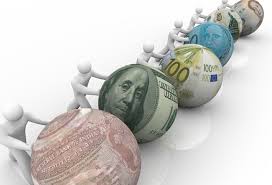Global Growth Harmonized
YemenExtra
The economic prospects of the eurozone and Japan, and some large emerging markets, such as Russia and Brazil, have turned around.
The recovery from the financial crisis of 2008-09 is finally expanding beyond a few national economies. Until recently, the recovery from the global financial crisis of 2008-09 was one of the most disappointing seen in the postwar period.
Even as late as last year, many economists were convinced that the world had entered “secular stagnation “a permanent downshift in economic growth.
The anemic global recovery was powered primarily by moderate growth in only a few economies, including the United States, the United Kingdom, and Germany, a senior economist for IHS Markit, Chris G. Christopher, Jr., wrote for SupplyChain Quarterly.
While the previous stages of the recovery were largely based on growth in a small number of countries, worldwide economic growth in the past year the biggest improvement since 2011, was built on broader foundations. In particular, the economic prospects of the eurozone and Japan, and some large emerging markets, such as Russia and Brazil, have turned around.
“We estimate that the eurozone economy expanded 2.5% in 2017 to achieve its best year of growth since 2007. Labor markets in Europe continue to improve; with inflation falling back in recent months, the weak wage growth that has been seen in some countries will take less of a toll on real household incomes.
Economic growth in the United States continues to grow, but at a slower pace. US gross domestic product grew at a 2.6% annualized rate during the fourth quarter of 2017, and the pace of inventory building was well below the sustainable level, which means that inventory investment may likely boost growth in the near term.
The outlook for emerging markets continues to improve as well. Commodity prices are still rising strongly, which has stabilized the economies of commodity exporters, and the fall of the US dollar is removing a major source of downward pressure on the currencies of developing economies.
Whereas much of the global economic recovery had been characterized by strength in a few key countries, global growth is now becoming more harmonized. Consequently, world growth is likely to remain robust for at least most of the coming year and probably through 2019.

